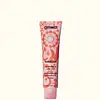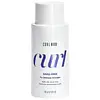What's inside
What's inside
 Key Ingredients
Key Ingredients

 Benefits
Benefits

 Concerns
Concerns

 Ingredients Side-by-side
Ingredients Side-by-side

Water
Skin ConditioningPolysorbate 20
EmulsifyingGlycerin
HumectantPropanediol
SolventPolyquaternium-59
UV AbsorberPropylene Glycol
HumectantQuaternium-80
Vitis Vinifera Leaf Extract
Skin ConditioningWine Extract
AntioxidantGlycine Soja Germ Extract
EmollientScutellaria Baicalensis Root Extract
AstringentHippophae Rhamnoides Fruit/Seed Oil
AntimicrobialTriticum Vulgare Germ Extract
Skin ConditioningGlycine
BufferingAlanine
MaskingArginine
MaskingAspartic Acid
MaskingHistidine
HumectantIsoleucine
Skin ConditioningPhenylalanine
MaskingProline
Skin ConditioningSerine
MaskingThreonine
Valine
MaskingLactobacillus Ferment
Skin ConditioningLactic Acid
BufferingSodium PCA
HumectantSodium Acetate
BufferingSodium Lactate
BufferingPCA
HumectantCellulose
AbsorbentPolyquaternium-39
Dimethicone
EmollientHydroxyethylcellulose
Emulsion StabilisingPolyquaternium-37
Guar Hydroxypropyltrimonium Chloride
Skin ConditioningCalcium Gluconate
HumectantGluconolactone
Skin ConditioningSodium Benzoate
MaskingButylene Glycol
HumectantEthylhexylglycerin
Skin ConditioningPhenoxyethanol
PreservativeIsopropyl Alcohol
SolventSodium Chloride
MaskingParfum
MaskingHydroxycitronellal
PerfumingLimonene
PerfumingWater, Polysorbate 20, Glycerin, Propanediol, Polyquaternium-59, Propylene Glycol, Quaternium-80, Vitis Vinifera Leaf Extract, Wine Extract, Glycine Soja Germ Extract, Scutellaria Baicalensis Root Extract, Hippophae Rhamnoides Fruit/Seed Oil, Triticum Vulgare Germ Extract, Glycine, Alanine, Arginine, Aspartic Acid, Histidine, Isoleucine, Phenylalanine, Proline, Serine, Threonine, Valine, Lactobacillus Ferment, Lactic Acid, Sodium PCA, Sodium Acetate, Sodium Lactate, PCA, Cellulose, Polyquaternium-39, Dimethicone, Hydroxyethylcellulose, Polyquaternium-37, Guar Hydroxypropyltrimonium Chloride, Calcium Gluconate, Gluconolactone, Sodium Benzoate, Butylene Glycol, Ethylhexylglycerin, Phenoxyethanol, Isopropyl Alcohol, Sodium Chloride, Parfum, Hydroxycitronellal, Limonene
Water
Skin ConditioningGlycerin
HumectantPolyquaternium-37
Cocos Nucifera Oil
MaskingPentaclethra Macroloba Seed Oil
EmollientPolyquaternium-55
PPG-26-Buteth-26
Skin ConditioningDipropylene Glycol
HumectantParfum
MaskingC10-40 Isoalkylamidopropylethyldimonium Ethosulfate
PEG-40 Hydrogenated Castor Oil
EmulsifyingPhenoxyethanol
PreservativeQuaternium-33
Caprylyl Glycol
EmollientDisodium EDTA
Tocopherol
AntioxidantWater, Glycerin, Polyquaternium-37, Cocos Nucifera Oil, Pentaclethra Macroloba Seed Oil, Polyquaternium-55, PPG-26-Buteth-26, Dipropylene Glycol, Parfum, C10-40 Isoalkylamidopropylethyldimonium Ethosulfate, PEG-40 Hydrogenated Castor Oil, Phenoxyethanol, Quaternium-33, Caprylyl Glycol, Disodium EDTA, Tocopherol
Ingredients Explained
These ingredients are found in both products.
Ingredients higher up in an ingredient list are typically present in a larger amount.
Glycerin is already naturally found in your skin. It helps moisturize and protect your skin.
A study from 2016 found glycerin to be more effective as a humectant than AHAs and hyaluronic acid.
As a humectant, it helps the skin stay hydrated by pulling moisture to your skin. The low molecular weight of glycerin allows it to pull moisture into the deeper layers of your skin.
Hydrated skin improves your skin barrier; Your skin barrier helps protect against irritants and bacteria.
Glycerin has also been found to have antimicrobial and antiviral properties. Due to these properties, glycerin is often used in wound and burn treatments.
In cosmetics, glycerin is usually derived from plants such as soybean or palm. However, it can also be sourced from animals, such as tallow or animal fat.
This ingredient is organic, colorless, odorless, and non-toxic.
Glycerin is the name for this ingredient in American English. British English uses Glycerol/Glycerine.
Learn more about GlycerinParfum is a catch-all term for an ingredient or more that is used to give a scent to products.
Also called "fragrance", this ingredient can be a blend of hundreds of chemicals or plant oils. This means every product with "fragrance" or "parfum" in the ingredients list is a different mixture.
For instance, Habanolide is a proprietary trade name for a specific aroma chemical. When used as a fragrance ingredient in cosmetics, most aroma chemicals fall under the broad labeling category of “FRAGRANCE” or “PARFUM” according to EU and US regulations.
The term 'parfum' or 'fragrance' is not regulated in many countries. In many cases, it is up to the brand to define this term.
For instance, many brands choose to label themselves as "fragrance-free" because they are not using synthetic fragrances. However, their products may still contain ingredients such as essential oils that are considered a fragrance by INCI standards.
One example is Calendula flower extract. Calendula is an essential oil that still imparts a scent or 'fragrance'.
Depending on the blend, the ingredients in the mixture can cause allergies and sensitivities on the skin. Some ingredients that are known EU allergens include linalool and citronellol.
Parfum can also be used to mask or cover an unpleasant scent.
The bottom line is: not all fragrances/parfum/ingredients are created equally. If you are worried about fragrances, we recommend taking a closer look at an ingredient. And of course, we always recommend speaking with a professional.
Learn more about ParfumPhenoxyethanol is a preservative that has germicide, antimicrobial, and aromatic properties. Studies show that phenoxyethanol can prevent microbial growth. By itself, it has a scent that is similar to that of a rose.
It's often used in formulations along with Caprylyl Glycol to preserve the shelf life of products.
We don't have a description for Polyquaternium-37 yet.
Water. It's the most common cosmetic ingredient of all. You'll usually see it at the top of ingredient lists, meaning that it makes up the largest part of the product.
So why is it so popular? Water most often acts as a solvent - this means that it helps dissolve other ingredients into the formulation.
You'll also recognize water as that liquid we all need to stay alive. If you see this, drink a glass of water. Stay hydrated!
Learn more about Water